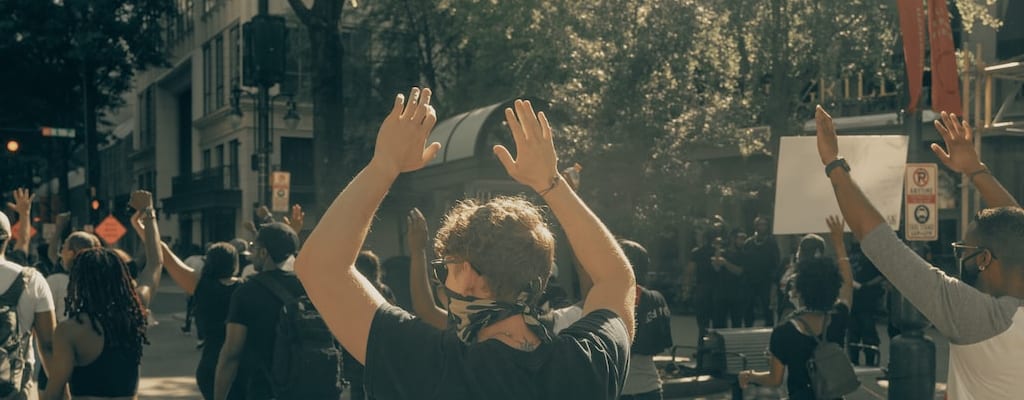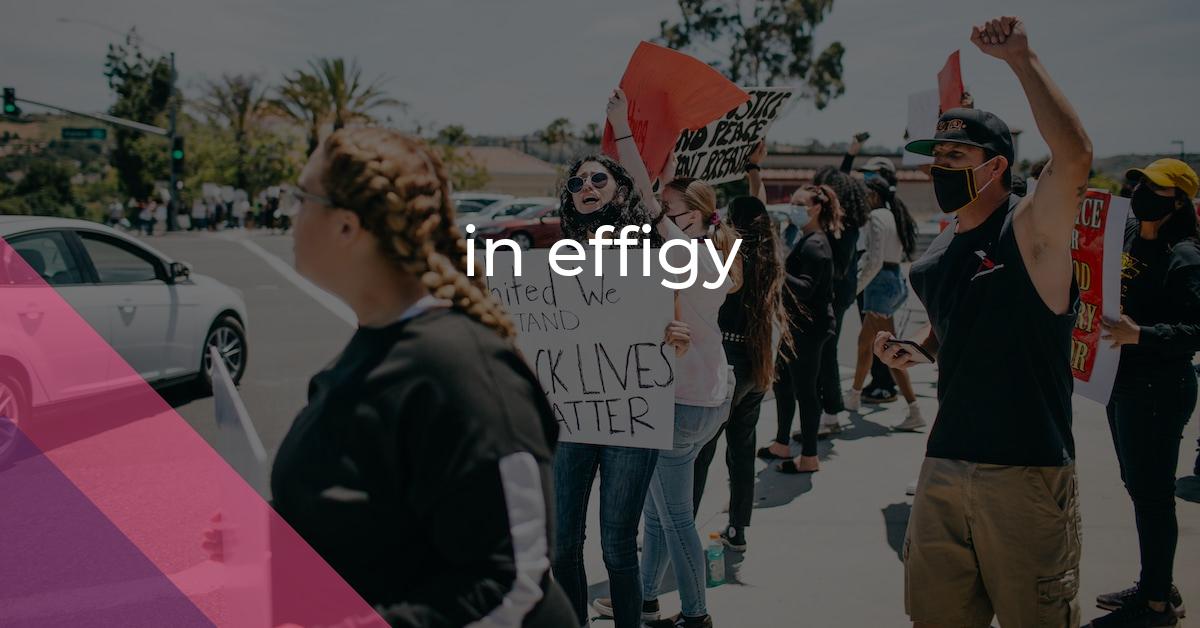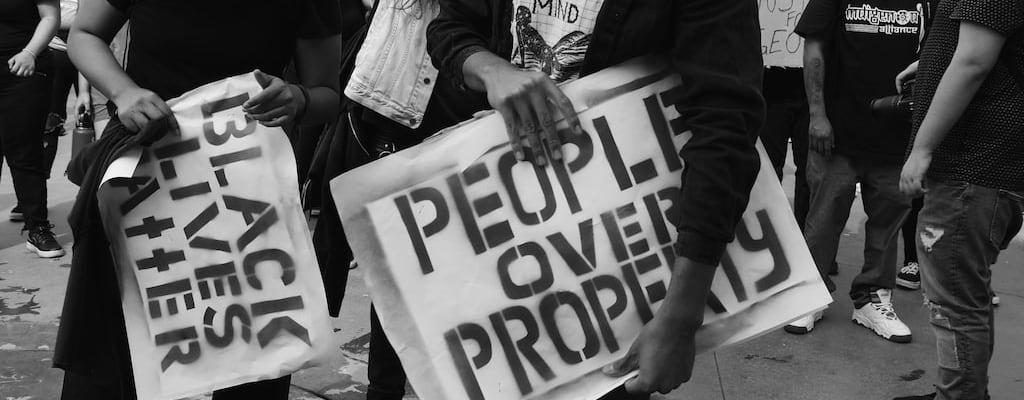in effigy: Idiom Meaning and Origin
What does ‘in effigy’ mean?
The idiom "in effigy" means to represent or symbolize a person or thing by a sculpture or image, usually as a way of expressing anger, protest, or contempt.

Idiom Explorer
The idiom "make faces" means to distort one's face in an exaggerated or funny way to express emotions like disgust, annoyance, or humor.
The idiom *in your face* means to confront someone with something aggressively or boldly, often to provoke a reaction. It implies direct and unapologetic behavior, disregarding social boundaries.
An idiom used to describe someone who is in an emotional or mental state of extreme agitation, distress, or confusion.
The idiom "hurt someone's feelings" means to cause emotional pain or upset to someone by saying or doing something that offends or upsets them.
An idiom meaning someone has an extremely unattractive or unpleasant face, often used to give a brutally honest description of someone's appearance.
The idiom "give someone grief" means to continuously cause trouble or annoyance to someone, often by criticizing or complaining about their actions or behavior.
The idiom "give face" means to show respect or give someone a positive image or reputation in front of others. It is a cultural concept commonly used in East Asian societies.
The idiom "get bent" is an offensive expression typically used to dismiss or belittle someone, urging them to go away or expressing frustration towards them. It is considered rude and impolite.
The idiom *fuck you* is an offensive, vulgar expression typically used to convey extreme anger, resentment, or contempt towards someone. It is highly inappropriate in most formal or polite settings.
Symbolic Power Unleashed
When someone or something is depicted or represented in effigy, it means that a symbolic representation or likeness is made of that person or thing. This representation is often made as a way to express anger, protest, or scorn towards the actual person or thing it represents.
The term effigy is derived from the Latin word "effigies," which means "copy" or "likeness." It has been in use in the English language since the 1530s. The idiom in effigy emerged within the 18th century and has since become a popular expression in English vernacular.
The act of creating an effigy is deeply rooted in ancient traditions and has been used as a form of protest or expression of discontent throughout history. In effigy is primarily used to describe the making or burning of effigies, which are typically made out of materials such as cloth, straw, or other easily burnable materials. The depiction is often made to resemble the person or thing it represents, sometimes with exaggerated features or characteristics.
The purpose of creating or burning an effigy is to publicly showcase disapproval or anger towards the person or thing it represents. By making a symbolic representation, individuals or groups can express their discontent without directly harming the actual person or thing. In some cases, the burning of an effigy is seen as a cathartic act, releasing pent-up emotions or frustrations.
The idiom in effigy is commonly used in various contexts, such as in political protests, where effigies of politicians or public figures may be burned or displayed. It has also been used in instances where individuals want to express their dissatisfaction with a particular company, product, or societal issue.
In effigy is a vivid phrase that encapsulates the powerful symbolism behind the act of creating or burning an effigy. It represents a tangible manifestation of frustration or anger and serves as a way for individuals or groups to communicate their dissent.
One related idiom is "cut a figure." This idiom means to make an impressive or striking appearance. When a person "cuts a figure," they stand out and make a strong impression on others. It can be used to describe someone's physical appearance, style, or demeanor.
In the context of creating an effigy, the idiom "cut a figure" can be applied when the effigy is made in such a way that it accurately represents the physical appearance or characteristics of the person or thing it is meant to symbolize. The effigy can be made with attention to detail, capturing the essence of the individual or object, and thereby "cutting a figure" that is instantly recognizable and makes a strong impression.
Another related idiom is "make faces." This idiom means to contort one's facial features in a humorous or exaggerated way, often to tease or mock someone. When a person "makes faces," they are expressing their emotions or opinions through facial expressions.
In the context of creating an effigy, the idiom "make faces" can be applied when the effigy is made with exaggerated features or expressions that are meant to mock or express disdain towards the person or thing it represents. By exaggerating the facial features or expressions on the effigy, the creator is "making faces" in a symbolic manner, conveying their emotions or opinions non-verbally.
The final related idiom is "fuck you." This is a vulgar and offensive phrase used to express strong anger, disdain, or disrespect towards someone. While the phrase itself is not commonly used in polite or formal conversations, it is reflective of intense negative emotions.
In the context of creating an effigy, the idiom "fuck you" can be associated with the act of burning the effigy. By burning an effigy, individuals or groups are expressing their deep anger or disdain towards the person or thing it represents. The burning can be seen as a symbolic act of defiance or protest, conveying a strong message of dissatisfaction or rejection.
While the origins of the phrase may be traced back to ancient traditions and the burning of effigies is a practice that has been observed throughout history, the idiom in effigy continues to be used in modern times. Its relevance and impact demonstrate the enduring nature of symbolic expression and the power of visual representation in conveying messages and emotions.
The idiom in effigy holds a significant place in the English language, offering a unique glimpse into how people choose to express their discontent, protest, or disdain. It serves as a reminder of the multifaceted nature of human communication and the creative ways in which language and symbolism intertwine.
Example usage
Examples of how the idiom "in effigy" can be used in a sentence:
- Protesters burned an effigy of the dictator in the town square as a symbol of their opposition.
- The students created an effigy of their teacher to celebrate the end of the school year.
- The angry crowd hanged an effigy of the politician from a tree to express their disgust with his actions.
More "Protests" idioms



